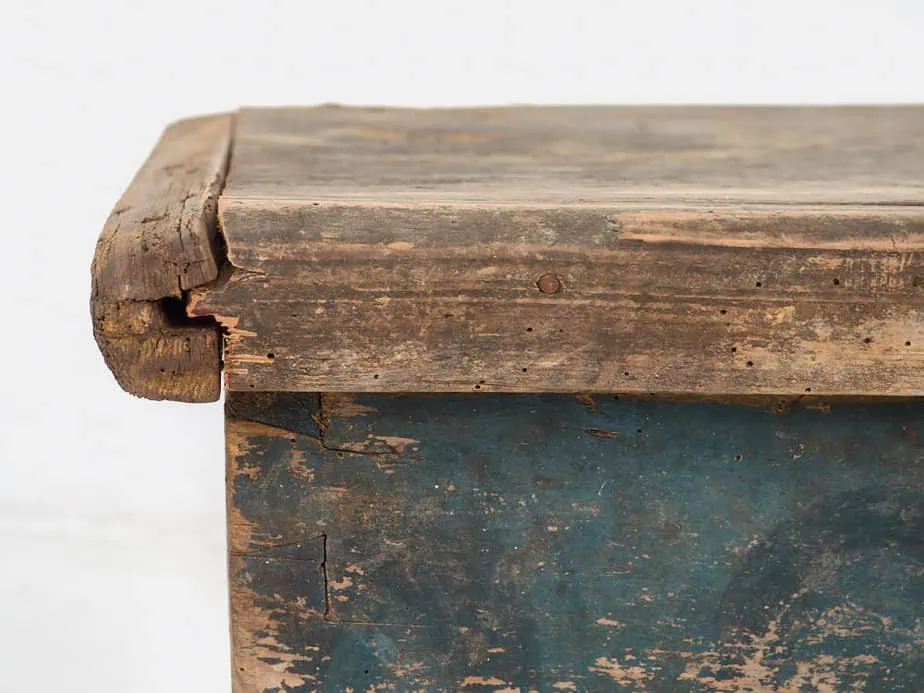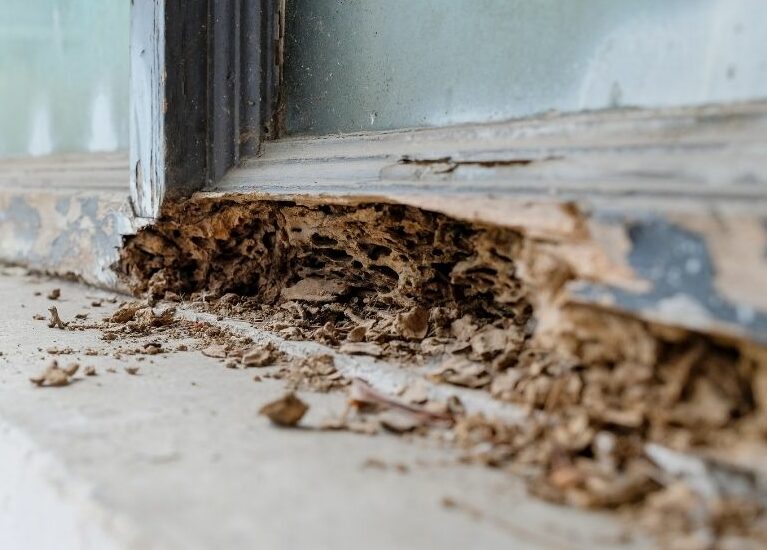Antique furniture has a special value, but there are silent threats that can damage it over time. Knowing about these pests is essential to protect your furniture. Below, we explain the characteristics of woodworm, termites and moths, and how to act against them.
1. Woodworm
Woodworm is the common name for the larvae of certain beetles that feed on wood. These larvae live inside wood for years, creating galleries as they develop.
- How to detect: The most obvious sign is small round holes in the surface of the wood, accompanied by a very fine sawdust. These holes are the exits used by adult beetles.

2. Termites
Termites are social insects that form organized colonies. They feed on cellulose and can cause severe structural damage, as they consume wood from the inside without showing visible signs until the damage is advanced.
- How to spot them: They usually build mud tunnels on wood surfaces to protect themselves from light. Affected wood sounds hollow when tapped, and sometimes worker termites (whitish in color and similar in appearance to ants) can be seen.

3. The Moths
The moths that damage furniture are actually their larvae. Specifically, clothes moth larvae feed on natural fibers such as wool, cotton or linen present in upholstery and textiles.
- How to detect them: Small irregular holes in fabrics, loose threads and, in some cases, cocoons stuck in corners of drawers or on the underside of furniture are observed.

How to Get Rid of Them
Each pest requires a specific approach:
- Para la Carcoma:
- Tratamiento: En infestaciones limitadas, pueden aplicarse insecticidas específicos directamente en los orificios mediante jeringuilla.
- Professional treatment: For extensive infestations or on valuable furniture, we recommend contacting specialized companies that use methods such as pressure injection, controlled fumigation, freezing or high temperature.
- For Termites:
- It is essential to contact professionals. Due to the size and organization of the colonies, home treatments are often insufficient. Specialized companies use baits, chemical barriers and other methods to eliminate the entire colony.
- Para las Polillas:
- Limpieza profunda: Aspirar minuciosamente el interior y exterior de los muebles, prestando atención a grietas y esquinas. Lavar las telas afectadas en agua caliente.
- Prevention: Store textiles in airtight bags and use natural repellents such as cedarwood, lavender or camphor in drawers and closets.
Furniture protection against these pests requires periodic attention and immediate action upon detection of any signs. While localized treatments can be used for small infestations of woodworm, in cases of termites or severe infestations we always recommend calling in professionals. Early detection and proper treatment are key to preserving the value and integrity of furniture over time.